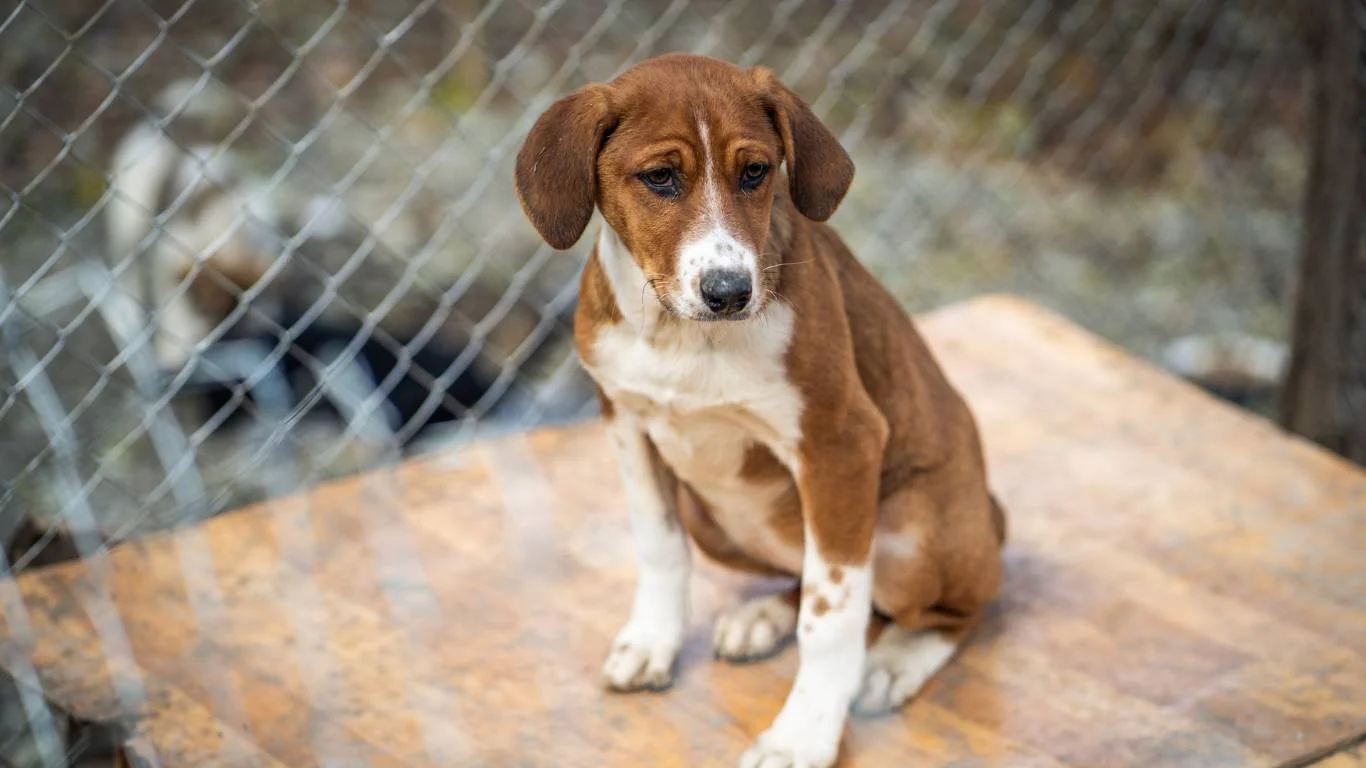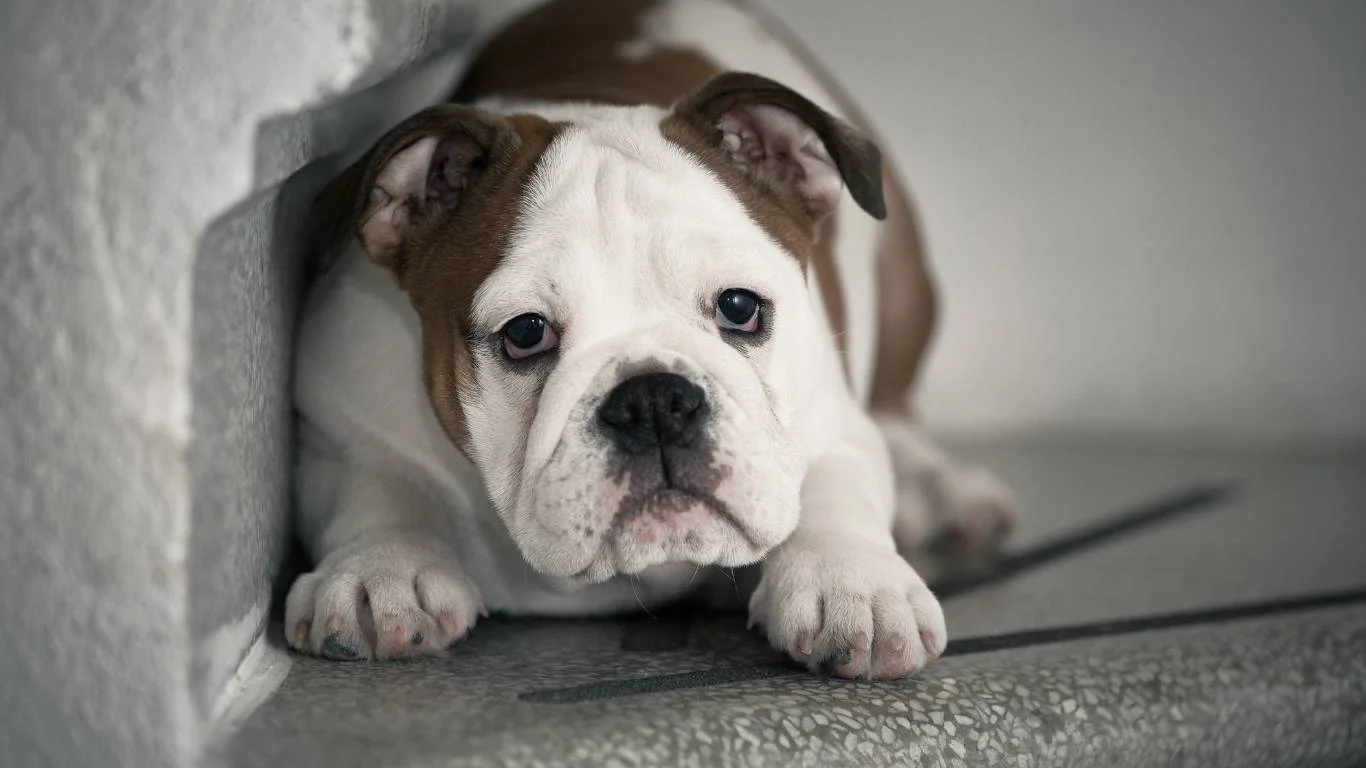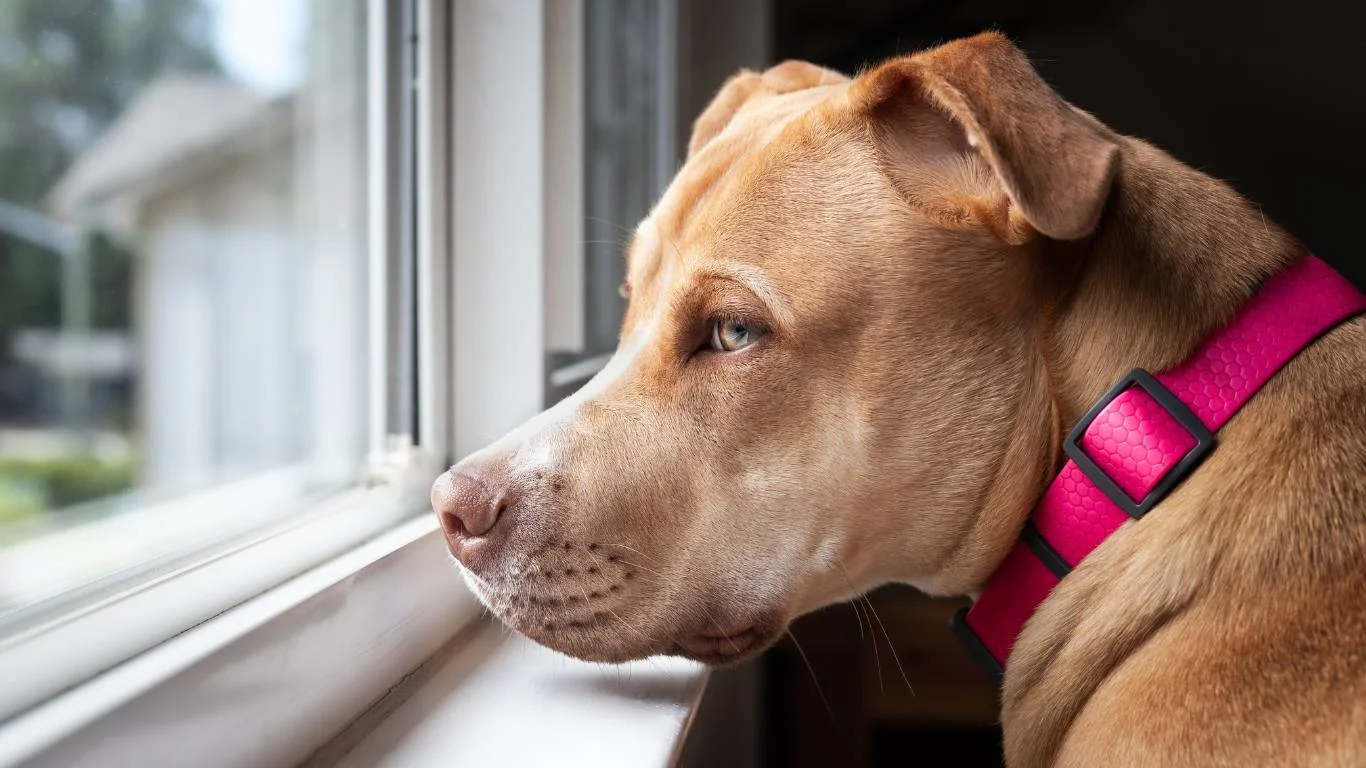How to Help a Dog with Fluid in the Lungs: Effective Treatments and Tips
When a pet parent hears the words “fluid in the lungs,” panic usually sets in. I get it — I’ve seen the look in clients’ eyes countless times in the exam room. You came in thinking it was just a mild cough, and suddenly you’re hit with something serious. So, how to help a dog with fluid in the lungs? That’s exactly what I want to walk you through today — not in technical jargon, but in the real-world way I’ve helped actual dogs and their families navigate this scary diagnosis.
What Does “Fluid in the Lungs” Really Mean?

Before we jump into the “what to do,” let’s unpack the “what the heck is happening.” Fluid in the lungs — or pulmonary edema, if you want the fancy term — means that liquid has built up in the air sacs (alveoli) of your dog’s lungs. That buildup makes it hard for your dog to breathe properly. Think of it like trying to breathe through a wet sponge. Sounds rough, right? It is.
Now, here’s where it gets a bit more complex — and why your vet team may seem to ask a thousand questions. There’s not just one reason for fluid in the lungs. It could be due to:
- Heart disease (especially left-sided congestive heart failure)
- Pneumonia
- Electrocution or trauma
- Toxins (yep, even some common ones around the house)
- High altitude sickness — rare, but I’ve seen it once in a dog visiting from sea level
Knowing the cause matters because treatment depends on it. What works for heart-related edema might actually hurt a dog with pneumonia. That’s where the vet (and the tech team — shoutout to us!) steps in to help sort it all out.
How to Help a Dog with Fluid in the Lungs: First Steps

Step 1: Recognize the Signs (So You Don’t Dismiss Them)
This is where a lot of folks miss the early signs. And it’s not their fault — dogs are champs at hiding pain and discomfort. But some red flags you don’t want to ignore include:
- Rapid or labored breathing — especially if it looks like your dog is “working” to breathe
- Persistent cough, often worse at night or after lying down
- Gurgling or wet sounds when breathing
- Blue or pale gums (a major emergency sign!)
- Fatigue, weakness, or sudden collapse
I once had a sweet senior Pomeranian patient who came in just seeming “a little off.” Her mom said she was sleeping more and breathing faster after walks. Turned out, she had early congestive heart failure with fluid in her lungs. Early detection meant we were able to stabilize her and give her many more good months of tail wags and belly rubs.
Step 2: Get Your Dog to the Vet — Stat
If you even suspect your dog has fluid in the lungs, please don’t wait it out. This is one of those situations where home care comes after stabilization, not before. Your vet will likely:
- Do chest X-rays (to confirm fluid presence and location)
- Run bloodwork to assess heart, kidney, and overall organ function
- Check oxygen levels (with a pulse oximeter or blood gas test)
- Possibly perform an ultrasound (especially if heart disease is suspected)
It’s a team effort — vet, techs, maybe even a cardiologist. But trust me, this teamwork is what saves lives. And in many cases, we can make your pup feel better surprisingly fast.
At-Home Care: What You Can Do After Treatment

Let Your Pup Rest (But Monitor Closely)
Once your dog is stable and back home, the healing journey begins. And rest is a huge part of that. Create a quiet, low-stress environment. Soft bedding, minimal activity, and tons of gentle love go a long way. But — and I can’t stress this enough — keep a close eye on their breathing. You’re looking for any return of:
- Increased respiratory rate (count breaths when they’re sleeping — it should be under 30 breaths per minute)
- Nasal flaring or open-mouth breathing
- Gums losing their healthy pink color
If anything seems off, call your vet immediately. I’ve had more than one case where a quick recheck saved a dog from spiraling again.
Nutrition and Supplements: Where My Experience Comes In
This is where I get a little nerdy — in the best way. Supporting lung and heart function with the right nutrition can make a huge difference in recovery and prevention of relapse. Depending on your dog’s condition, your vet may recommend:
- Low-sodium diet (especially for heart-related edema)
- Omega-3 fatty acids to help reduce inflammation
- Taurine and L-carnitine supplements for heart health
- High-quality protein to maintain muscle mass
I worked with a Labrador who hated switching foods — picky as heck. But we eased him into a low-sodium, omega-rich diet (with lots of praise and some sneaky treats), and it made such a difference in his energy and breathing. Don’t underestimate what the right nutrients can do!
Medications and Therapies Your Vet Might Recommend

Once your pup is stable and diagnosed, meds are almost always a part of the plan. Depending on what caused the fluid buildup in the lungs, treatment can vary — and this is where having a vet you trust (and one who listens) makes all the difference.
Common Medications for Pulmonary Edema
I’ve handled and administered all of these countless times in practice, and trust me — when they’re prescribed properly and used consistently, the results can be remarkable. Here are some of the most common:
- Diuretics like furosemide — these help pull fluid out of the lungs by making your dog pee more
- ACE inhibitors like enalapril or benazepril — support heart function and reduce strain
- Pimobendan — a big one for heart failure cases, helps the heart pump more efficiently
- Antibiotics — if the cause is bacterial pneumonia
- Oxygen therapy — often used short-term in clinic, but some severe cases use home oxygen setups
One case that really stuck with me involved a miniature schnauzer named Toby. He had heart-related pulmonary edema and came in barely able to breathe. Within 30 minutes on oxygen and diuretics, he was visibly more comfortable — like night and day. It was emotional to watch, honestly.
Monitoring Medication Side Effects
This part often gets skipped over in articles, but I want to highlight it because I’ve seen it firsthand: medications can be lifesaving, but they also need close monitoring. Diuretics, for example, can dehydrate dogs or cause kidney issues if dosed too aggressively.
Here’s what I usually tell pet parents to keep tabs on:
- Changes in appetite or thirst
- Urinating way more or suddenly straining to pee
- Lethargy or vomiting
- Any return of coughing or difficulty breathing
You’ll likely be doing follow-ups with your vet anyway, but keeping a little notebook or using your phone’s notes app to track symptoms daily can help a ton.
Supporting Long-Term Health Through Environment and Routine

Reduce Stress (for You and Your Dog)
A calm pup is a healthier pup — especially when they’re recovering from something as serious as fluid in the lungs. I always recommend creating a consistent routine and calm environment. Dogs thrive on predictability, and when their body is under stress, they really need that emotional stability, too.
Simple things can help:
- Keep mealtimes and meds on a consistent schedule
- Avoid chaotic environments or too much noise
- Use calming tools like pheromone diffusers or calming beds
- Gently limit physical activity until your vet gives the go-ahead
I had a boxer patient who was a total social butterfly — loved running around the house and barking at squirrels. After a pulmonary edema episode, we helped his family set up a more chill routine with short leash walks, soft music, and puzzle feeders for mental stimulation. His recovery was smooth and he bounced back better than we expected.
Hydration: Not Too Much, Not Too Little
Hydration is tricky after an episode of pulmonary edema. On one hand, you don’t want your dog to get dehydrated (especially on diuretics). On the other hand, too much fluid can worsen the condition. Balance is everything.
Tips I give clients include:
- Offer fresh water in small amounts throughout the day
- Use ice chips if your vet wants fluids restricted temporarily
- Track water intake (you don’t have to be obsessive — just keep a general idea)
And don’t forget — canned food has more moisture than dry kibble. So if your vet says it’s okay, adding some wet food to your dog’s meals can support hydration without overdoing it.
Advanced Support Options (When the Basics Aren’t Enough)

Home Oxygen Setups
Not super common, but I’ve seen a few clients go this route when their dogs had chronic heart issues. You can actually set up oxygen tents or use oxygen concentrators at home with guidance from your vet. It’s definitely an investment, but in some cases, it’s a literal life-saver.
Seeing a Specialist (And Why It’s Worth It)
If your vet recommends a veterinary cardiologist or internal medicine specialist, don’t be intimidated. It’s not a sign your vet is giving up — it’s a sign they care enough to get your pup the best support possible.
Specialists can do things like:
- Advanced imaging (like echocardiograms)
- More nuanced medication adjustments
- Custom nutrition and supplement plans
- Ongoing monitoring of progressive disease
From my end as a vet assistant, I’ve watched dogs go from being near collapse to thriving for years with specialist care. It can feel overwhelming to take that next step, but it’s one that often leads to peace of mind and better outcomes.
End-of-Life Considerations — A Gentle Reality Check
Look, I’m not trying to be a downer, but I believe in honesty wrapped in compassion. If a dog has severe, chronic pulmonary edema and poor response to treatment, sometimes the kindest thing we can do is talk about quality of life. You don’t have to make those decisions alone — your vet team is there to guide you, support you, and offer options with heart.
I’ve held paws and hugged owners through those tough goodbyes, and while it never gets easier, knowing you gave your dog love, comfort, and advocacy every step of the way? That’s powerful.
Long-Term Monitoring and Lifestyle Changes for Dogs with Fluid in the Lungs

If you’ve made it this far, chances are you’re determined to help your dog live a long, comfortable life despite their lung issues. And you know what? I’m right there with you. With regular care, routine checkups, and a few lifestyle tweaks, your dog can thrive even with fluid in the lungs. I’ve seen it happen time and again with my own patients, and it’s always rewarding to see them wagging their tails through it all.
Routine Checkups: Why They Matter
No matter how well your dog is doing, regular vet visits are key. This isn’t just about checking for fluid in the lungs — it’s about staying ahead of any potential complications. I usually recommend that owners of dogs with a history of fluid in their lungs schedule a checkup every 3 to 6 months. This allows your vet to track any changes and adjust medications or treatments as necessary.
During these visits, your vet will likely:
- Listen to your dog’s heart and lungs to detect any fluid buildup
- Take chest X-rays to monitor for any changes
- Recheck bloodwork to ensure organ functions are stable
- Adjust medications as needed
By keeping these appointments, you’re giving your dog the best chance at a healthy future. It might seem like a lot of work, but trust me, it’s far easier than having to face a major health crisis down the road.
Exercise and Activity Modifications
Okay, let’s be honest: telling your dog to slow down is tough. But if they’ve had fluid in their lungs, physical activity is something that needs to be carefully managed. That doesn’t mean your dog has to become a couch potato — but it does mean that a full-on game of fetch is probably out of the question for a while.
Here’s how you can modify your dog’s routine to stay active but safe:
- Short, controlled walks — Think 10 to 15 minutes at a time, on a leash.
- Gentle play — Soft tug-of-war or brief fetch sessions (without excessive exertion).
- Avoid extreme temperatures — Heat can be especially hard on dogs with lung issues.
- Swim sessions — If your vet approves, swimming can be a low-impact way for your dog to exercise.
As a veterinary assistant, I’ve seen too many owners inadvertently push their dogs too hard during recovery, so always be aware of your dog’s stamina. If they’re panting heavily, coughing, or lagging behind, it’s time for a break. Pushing too much can undo the progress made with medication and care.
Nutrition and Supplements: The Road to Recovery

By now, you probably already know how important nutrition is when it comes to helping your dog recover. When you’re managing fluid in the lungs, your dog’s diet can play a crucial role in both supporting their heart and lung function and helping them maintain their overall health.
What’s the Best Diet for a Dog with Fluid in the Lungs?
There’s no one-size-fits-all answer here, but I do have some general guidelines based on my experience working with dogs recovering from pulmonary edema:
- Low-sodium diet — Sodium can cause the body to retain fluid, so keeping sodium intake low is a priority. Choose dog foods labeled as “heart healthy” or “renal support” for the best options.
- High-quality protein — Dogs recovering from lung issues may lose muscle mass, so making sure they get enough protein is vital. Look for high-quality protein sources like chicken, turkey, and lamb.
- Omega-3 fatty acids — These healthy fats help reduce inflammation and support cardiovascular health. Consider a supplement, or look for foods with fish oils or flaxseed.
- Antioxidants — Foods rich in antioxidants like blueberries and spinach can help support your dog’s immune system as they recover.
One dog I worked with was on a strict low-sodium diet due to heart failure. At first, his owners were worried he’d hate the food, but once we started adding a little boiled chicken and some low-sodium broth, he was eating like a champ! And the results spoke for themselves. His breathing improved, and he felt much more energetic.
Supplements That Might Help
In addition to their regular food, your vet might recommend specific supplements to help support your dog’s recovery. Some options include:
- CoQ10 — This antioxidant helps with heart function and energy production.
- Fish oil — A source of omega-3s to support the heart and lungs.
- Taurine — An amino acid that’s crucial for heart health, especially in dogs with certain cardiac conditions.
- Probiotics — A healthy gut can make a huge difference in overall health, especially when your dog is on antibiotics or other medications.
Supplements are great for boosting your dog’s health, but remember: always consult your vet before introducing anything new. Not all supplements are right for every dog, especially those with underlying health conditions.
References
Disclaimer
The content provided in this article is for informational purposes only and should not be used as a substitute for professional veterinary advice. Always consult with your veterinarian before making any changes to your dog’s treatment or diet plan.






